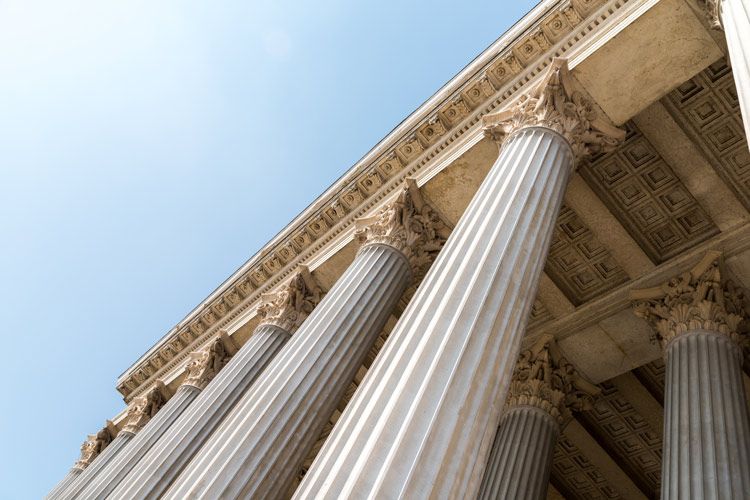Blog
Understanding and Protecting Trusts in An Evolving Regulatory Landscape
Get insight into everything from the legislative landscape to structuring trusts and distinguishing between coverages.
Family Offices that serve high-net-worth individuals have been in recent global headlines as governments target them in an effort to tax corporate and individual gains.
In December 2021, the Biden Administration announced an anti-corruption plan made in conjunction with more than 100 other countries. While the reported purpose of this announcement is to counter fraud, regulations tend to expand to principled clients. According to the Wall Street Journal, the new 38-page plan calls for government agencies to work with Congress to use new and existing laws to make it more difficult for “gatekeepers” to the financial system (including lawyers, accountants, trusts, and company-service providers) “to evade scrutiny.” While there certainly are cases that cross the line, most of the structures used comply with regulations. For example, when the Pandora Papers were released in October 2021, it became evident that many government officials, billionaires, and celebrities were using various financial structures that adhered to local laws.
While there is continued scrutinization of complex wealth transfer vehicles when conveying generational wealth, it is important to recognize that well-established laws are being used. Trusts are one frequently used vehicle. They are created for numerous reasons and can be structured in endless ways.
The trust structure will depend on:
- the goals of the grantor (wealth owner)
- the laws where the trust was created
- the type of trust created for the benefit of third parties (beneficiaries)
The individuals who bridge the gap between the wealth owners and the beneficiaries are the trustees. They have control of the assets that are owned by the trust. A trustee can be either an individual or an institution. This article focuses on the role of institutional trustees, also known as trust companies.

What Are the Roles of Trust Companies?
A trust company can perform some or all the various trustee functions. These duties typically include investment, administration, distribution, and reporting. As a trustee, the trust company and its officers have a fiduciary responsibility to the beneficiaries through a written agreement outlining the services they must perform. It is essential for all parties to review this statement of work because it not only outlines the services to be provided to the trust but also service fees and liability provisions. Should a challenge arise between the beneficiaries and the institutional trustee, the potential liability will be evaluated based on the service agreement and the trust document.
What Are the Obligations to the Grantor?
The grantor (wealth owner) creates the trust. However, once the trust is established and funded, its assets are transferred to the trust and managed by a third party known as the trustee. The trust document serves in a similar way as a business operating agreement, outlining the who, what, where, when, and how of the grantor’s wishes. This document needs to be carefully thought out and designed to offer a balance of clear instruction and discretion to ensure the grantor’s wishes will be carried out and the best interests of the beneficiaries will be served.
What Are the Trust Company’s Obligations to Beneficiaries?
Assuming the trust company has been appointed to all the roles of a trust company has been appointed to all the roles of a trustee, it is obligated to follow the written terms of the trust, including investment, administration, reporting, and distribution of trust assets. While these may seem to be straightforward tasks, they can get quite complicated—especially if the trust is formed under the laws of states or countries that support the directed trust environment. In a directed trust, the roles and responsibilities are bifurcated.
In other words, the investment trustee is responsible for the management of the assets, but many of the additional trustee obligations can be directed to various other institutions and individuals depending on the laws of the state or country in which the trust was established. There are compelling reasons for these directed trust structures, including, but not limited to, family control, privacy, and asset protection. Often these laws can limit the fiduciary obligation of some of these roles, but that fiduciary obligation may be added back in via the trust instrument.
Understanding where there is and is not imposed fiduciary duty is important since fiduciary duty is the highest legal standard of care in law. These variations create uncertainty for the actual fiduciary responsibility, and many of these laws are new and have not yet been tested. We expect these laws will stand the test of time when the trust is served in good faith. However, In the face of bad fact patterns, the laws may be challenged.
Protecting Their Liability: Do Trust Companies Purchase Insurance?
In our experience, trust companies purchase many forms of insurance; however, our focus here is Directors & Officers Liability (D&O), professional Errors and Emissions (E&O) insurance, and crime bond policies.
The distinctions between these three coverages are:
- D&O insurance protects executives for the management of a company.
- E&O insurance protects trustees and the organization from mistakes made while carrying out their professional services.
- Crime bond policies protect the trust from theft of assets by an employee of the trust company.
In the US, some states require the company to purchase some or all of these insurance policies. Often the regulatory requirements are vague, and it is critical that the policy is designed by an expert in the field and is not just a checkbox for the regulators.
The key to designing an effective policy is understanding the exact services being provided by the trust company and the corporate structure of the company to ensure appropriate coverage. This task can be challenging because each trust company has a particular target client and menu of services.
Therefore, the insurance policies need to reflect the specific operations of the trust company.
What Is the Underwriting Process?
To obtain an insurance policy quote, the underwriters request some basic information such as general information about the entity, financial statements and typical service contracts. After an initial review of the information and independent research about the trust company’s reputation, business practices, and management, the underwriters may have additional questions. Some of today’s hot buttons for underwriters include understanding the trust company’s compliance with the following:
- Anti-money laundering (AML) and the Bank Security Act
- FACTA Foreign Account Tax Compliance Act (FACTA)
- Common Standard on Reporting
- Due Diligence for Financial Account Information (CRS)
It remains to be seen what the effects will be of that new anti-corruption plan, which was released by the Biden administration in advance of the virtual Summit for Democracy in December. In a statement that accompanied the plan’s release, the White House stated, “Those that abuse positions of power for private gain steal not just material wealth, but human dignity and welfare.”
In today’s volatile economic and political environment, the trust industry must remain diligent in its compliance with evolving laws and standards of care so that the industry can continue to service families who are legally passing on their wealth to future generations.
Table of Contents









